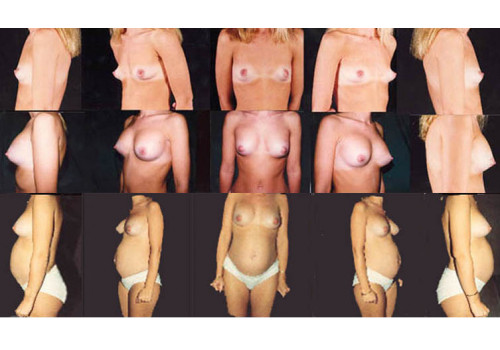Implants
Individual results may vary.
Case ID: 1994View

Front: Dr. Coleman’s Comments:
One of the interesting findings that have come from following patients that have become pregnant after they have had breast augmentations is that many actually have less ptosis after pregnancy than would be expected without implants. This even includes patients who go on to breast feed their babies. Some of this is probably due to the fact that the muscle and soft tissues around the implants effectively serve as a bra to maintain the implants in their original position. With this additional support, the breasts tend not to droop as much.
Hence a person’s goals for pregnancy should play little in their decision for the surgery.
There has also been a controversy about silicone in breast milk, and the dangers that this could pose to the infant. To date no one has been able to document that patients with silicone implants have ever posed a harmful effect to their children. Since most implants are now filled with saline (saltwater), there is no silicone to worry about, other than that of the actual shell of the implant. The shells are made of a silastic polymer instead of silicone gel, and should not be a concern. One must also remember that almost all pediatric feeding tubes, intravenous tubes, and other appliances used in a pediatric hospital are made of the same material, and have been proven to be safe. W.L.C
Upper Row: Pre-Op
Middle Row: Post-Op (three months)
Lower Row: Post-Op (1½ Years – seven months pregnancy)
Submuscular implants have actually been found to reduce drooping with pregnancy. Notice how little change seven months pregnancy has made on her shape.
View







